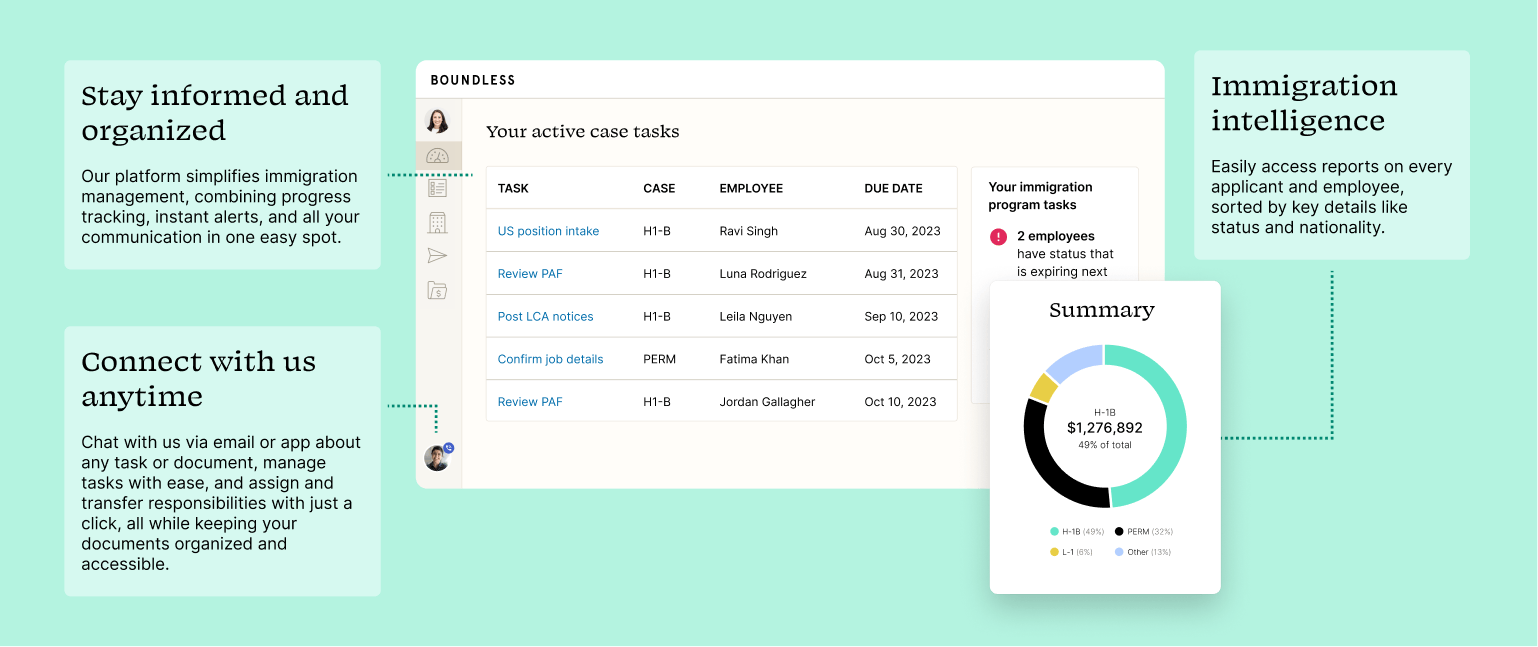Digital Platform
Get the full picture

Gain global visibility with easy-to-understand reports and stats on all your applicants — whether they’re current, future, or past — sorted by status, expiration dates, or nationality. Plus, stay on top of compliance with a handy dashboard that highlights important areas and even lets you import documents from other providers.
Digital Platform
Plan for your entire team, all at once
Automated processes
Take back your time from paperwork
Digital Platform
Easy, secure setup
Our cloud-based setup is a breeze to get started with and easy to tweak to your needs. We’re fully GDPR compliant, keeping your data safe and sound. Plus, with single sign-on support and customizable permissions, you control who sees what, ensuring top-notch security and privacy for your information.

Bring Boundless on board to elevate your immigration function
Get up and running with our cloud-based system in two days or less. Request a demo to get started.
"*" indicates required fields




